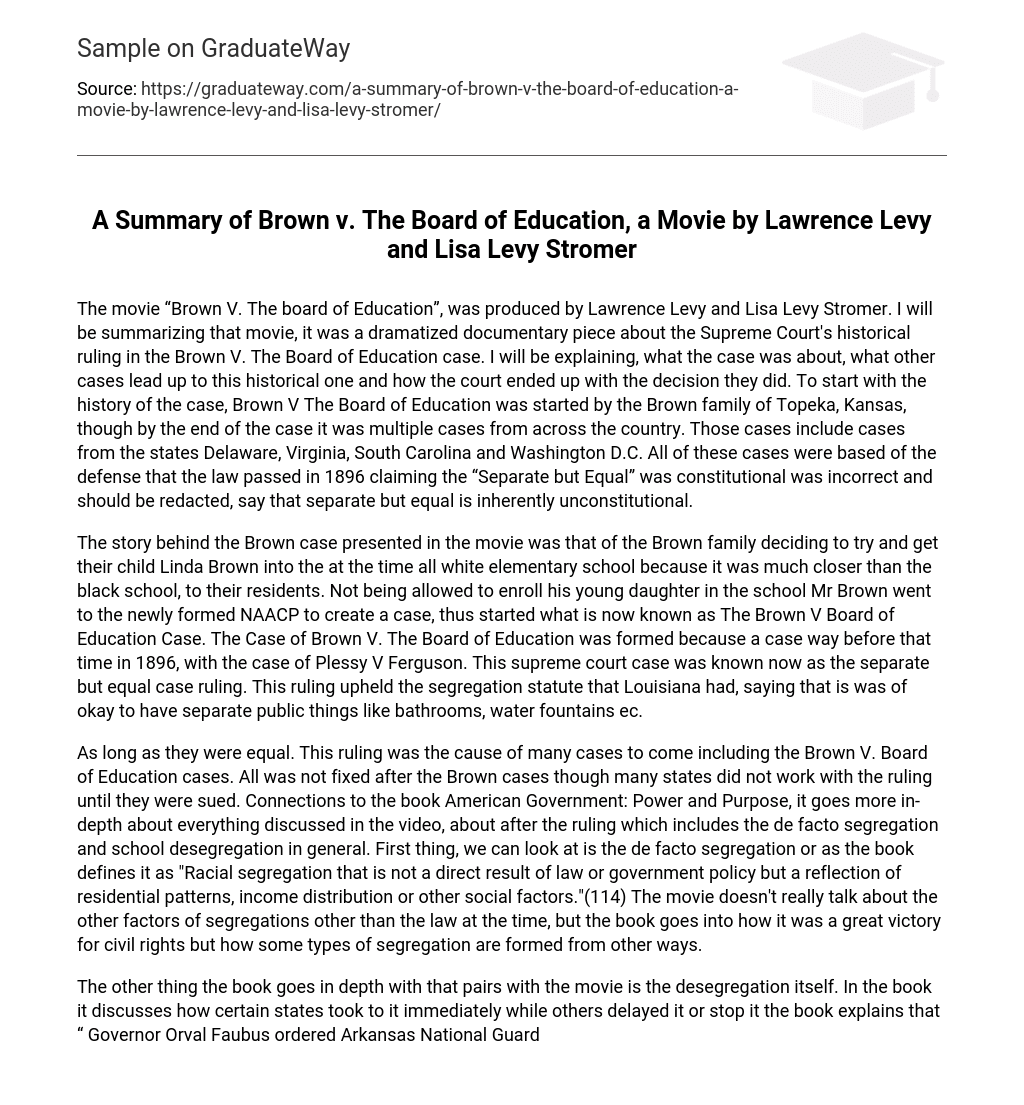The movie “Brown V. The board of Education” was co-produced by Lawrence Levy and Lisa Levy Stromer. It is a dramatized documentary that focuses on the Supreme Court’s landmark ruling in the Brown V. The Board of Education case. The film provides a summary of the case, including its background, the preceding cases that paved the way for this significant ruling, and the factors that influenced the court’s decision.
Initially initiated by the Brown family of Topeka, Kansas, this case eventually involved multiple cases from various states, including Delaware, Virginia, South Carolina, and Washington D.C. All these cases were based on the argument that the law passed in 1896, which upheld the constitutionality of “Separate but Equal,” was flawed and should be overturned.
The film argues that the concept of separate but equal is inherently unconstitutional.
The film showcased the Brown family’s choice to register their daughter Linda Brown in a predominantly white primary school, even though it was closer to their residence than the black school. When Mr. Brown’s attempt to enroll Linda was rejected, he sought help from the newly formed NAACP. This event marked the beginning of what is now famously known as The Brown V Board of Education Case. Responding to the precedent set by the Plessy V Ferguson case in 1896, which established and upheld Louisiana’s segregation statute under the separate but equal doctrine, this case emerged. As per this ruling, having segregated public facilities like bathrooms and water fountains was considered acceptable.
Despite the ruling on racial equality in the Brown v. Board of Education cases, many states did not fully resolve the issue until they were sued. The book American Government: Power and Purpose provides a more in-depth analysis of the topics covered in the video, particularly addressing challenges that arose after the ruling, such as de facto segregation and school desegregation. De facto segregation, as defined in the book (114), refers to racial segregation that is not directly caused by laws or government policies but rather reflects residential patterns, income distribution, or other social factors. While the movie primarily focuses on the legal aspects of segregation during that time period, the book explores how certain forms of segregation can be traced back to influences from society.
The book and the movie both delve into the issue of desegregation. The book discusses how some states embraced it immediately while others delayed or even resisted it. For instance, it reveals that Governor Orval Faubus of Arkansas ordered the state’s National Guard to defy a federal court order to integrate schools (116). This exemplifies how the movie and the book complement each other, offering a comprehensive portrayal of the event. The movie depicts the immediate impact, whereas the book delves deeper into the aftermath and reveals the limitations of the ruling. Consequently, while the movie serves as a great introduction to the event, it is through the book that we truly understand what happened next and what the ruling failed to achieve.





